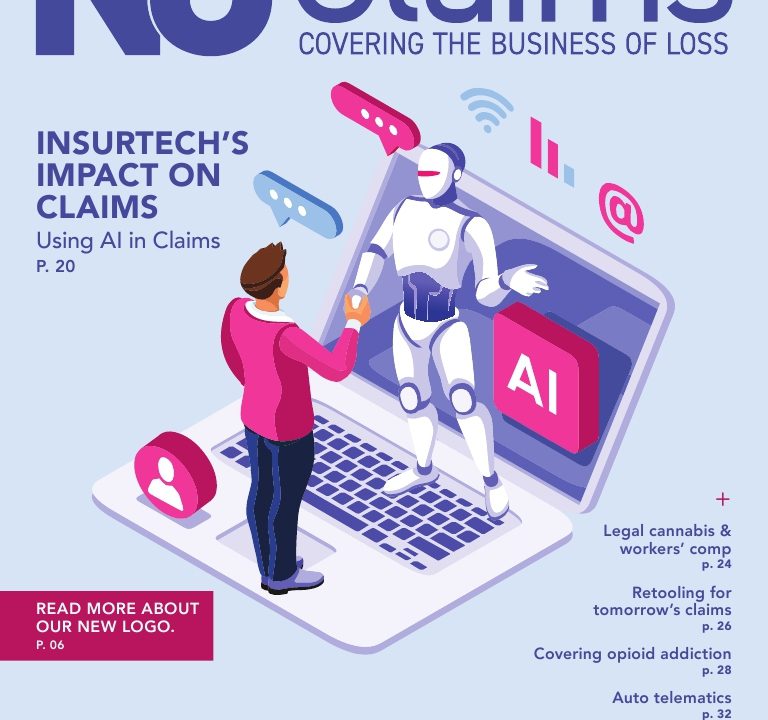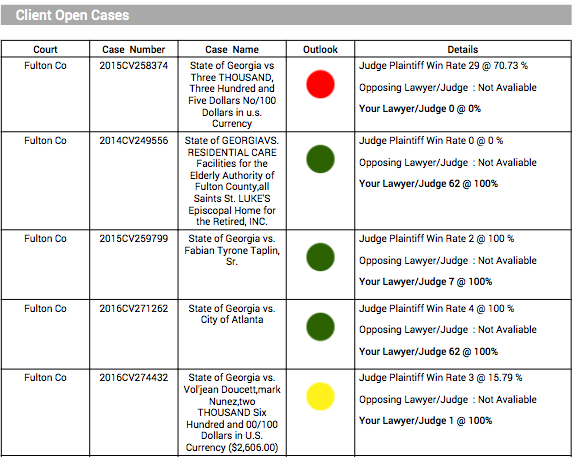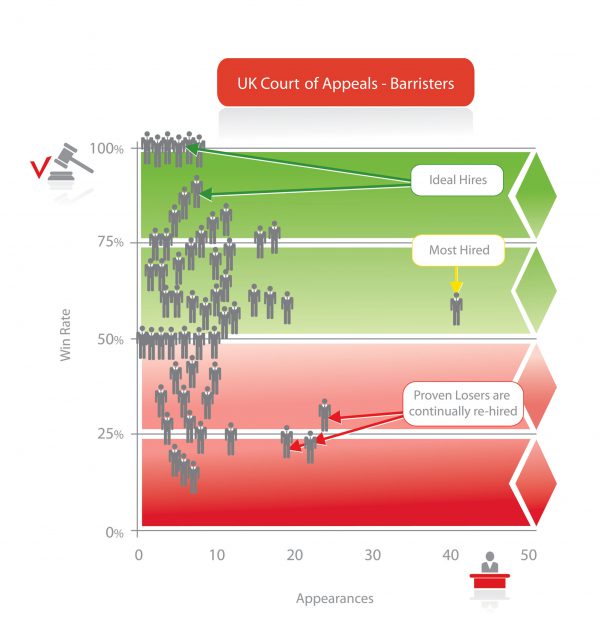AI for Legal Ops and Corporate Counsel – The First Wave
AI for Legal Ops and Corporate Counsel – The First Wave

The first wave of legal artificial intelligence (AI) is here; it’s slowly rising through corporate budgetary beachheads, reaching eagerly awaited tide pools to prove critical use cases, and doubling back to build a second wave capable of challenging the dunes of legal departments and transforming the prevailing landscape for legal ops and corporate counsel alike.
For legal ops, the first wave of legal AI holds great promise and opportunity, as it presents unparalleled access to mountains of Big Data, both internal and external, that were previously never scaled nor considered. More than unbridled access to raw data, AI provides legal ops with powerful tools to meaningfully structure data sets better and faster than humanly possible.
With the never-ending search for “more for less” from corporate legal departments, finding new methods to better leverage Big Data and create value is an essential measure of success. The underlying problem legal ops face has two prongs: (1) the company already has the internal data needed to enhance effectiveness and avoid unnecessary risk, but lacks sufficient tools to pull, correctly classify, and appropriately employ its data, or (2) the company does not have the external data needed to make fully informed decisions, and also lacks the resources to develop and maintain access to this data. Enter AI.
Moving from Risk Management to Risk Avoidance
Compared to the collecting, categorizing, and manipulating power of human beings, trained AI systems can scour millions of documents within minutes, if not seconds, and do so for a fraction of the cost. To illustrate the ability of AI to leverage internal company data hidden from corporate counsel, one need only look at the prominent use case of Intraspexion.
Intraspexion is the “Minority Report” of litigation and, Alice v. CLS Bank notwithstanding, recently received a patent for “Using Classified Text and Deep Learning Algorithms to Identify Risk and Provide Early Warning” (U.S. Patent No. 9,552,548). More condensed, Intraspexion uses Deep Learning, a “sub-sub-subset of AI,” to read through millions of company emails to reveal the handful of high-risk emails in-house counsel should review to help avoid and prepare for potential lawsuits.
One of the more important takeaways Nick Brestoff, the Founder of Intraspexion, provides to in-house teams, is that “corporate attorneys do not need to know how to program a computer to use Deep Learning.” Intraspexion’s algorithms are trained by Brestoff’s team using the text from cases for a particular type of lawsuit, and once the algorithm has been sufficiently trained, it can either be installed locally on a company computer or in the cloud. From there, all that’s needed is for the in-house team to read the high scoring emails and determine whether the results produced false positives or “surfaced a needle in the haystack.” In this sense, Brestoff argues that “AI doesn’t mean Artificial Intelligence; it means Augmented Intelligence,” as Deep Learning algorithms augment corporate counsel, empowering them to make decisions on whether to investigate, and what advice to give.
In looking for an apt analogy to describe how AI solves the first prong of the problem, Brestoff puts it best: “If Big Data is a lake, in-house legal teams are in the boat and can see only the surface. To catch a fish (either an advantage to take or risk to avoid), you need a fishing rod. That’s what Deep Learning is to Big Data.” Rather than waiting for when risk “metastasizes into a lawsuit,” Brestoff aims to provide legal departments with the tools to move from managing risk to avoiding risk.
Reigning in Legal Spend in Litigation
For legal ops leaders of Fortune 500 companies, finding the means to reduce total legal spend for litigation matters is the Holy Grail that AI has the power to uncover. To better comprehend the sea change legal AI is ushering forth, Premonition and UniCourt provide notable use cases for how having access to well-structured external data can solve the second prong of the problem through improving the way outside counsel is selected and litigation is managed.
At its core, “Premonition is an AI system that mines Big Data to find out which attorneys win before which Judges,” asserts Toby Unwin, the Co-Founder and CIO of Premonition. Premonition also claims to have amassed the “largest litigation database in the world,” dwarfing LexisNexis, Westlaw and Bloomberg combined through focusing on lower court and state court opinions, which represent 97 percent of all U.S. litigation. Leveraging this data with machine learning (ML) techniques, Premonition provides powerful judicial analytics, motions analytics, attorney win rate data, case duration statistics, and more to corporate clients.
Imagine a plaintiff’s attorney files a complaint seeking a seven-figure judgment against your company, and, using Premonition’s data, you find out that this attorney has lost nine out of the last ten times, and five of which are in front of the presiding Judge. Moreover, you are able to quickly identify the top 20 attorneys, a couple who are from your panel firms, who have the best track record for this particular case type in front of this particular Judge. Then going a level further, you are also able to uncover which motions were successful for defendants for that case type and that Judge, and discover that defendants have success rates of 80 percent on Summary Judgment motions and 70 percent on Motions to Dismiss.
“Legal departments are viewed as a cost center by the C-Suite,” notes Unwin. “Proving that you actually deliver value for your budget is an important motivator” for legal ops teams to adopt AI, as well as the nagging fear of missing out. Moving from traditionally more reactive positions, Premonition puts legal ops in the driver’s seat to better strategize with litigation departments on who to hire and how to move forward, all the while, reducing the underlying risk and total spend of litigation for the company.
Located at the intersection of AI and intelligent automation, UniCourt is utilizing algorithms and crowdsourced data alongside its automated docket updates and collaboration platform to challenge exorbitant subscription models for enterprise level clients. For legal ops leaders, Josh Blandi, the Co-Founder of UniCourt, understands that, “you can’t value add with analytics if you don’t have the data to produce it properly.” With this in mind, UniCourt’s focus is on “allowing people to work with the data” available in their growing database of over 31 million cases and 12 million documents.
“Political views aside,” notes Blandi, “one of the clients that uses UniCourt is the NRA, and they use it to track all of the Second Amendment litigation.” The NRA used to have two full-time paralegals, who every day would go through Pacer and countless state court websites to track the dockets of hundreds of cases, download any new documents, and then update their website to disseminate the information. Using UniCourt, “they went from having two full-time paralegals to one, who now does more in less than half the time,” and seamlessly shares new documents to Second Amendment litigation attorneys and other interested parties across the U.S.
Corporate counsel can also leverage UniCourt’s sharing options to more efficiently manage litigation. In less than one minute, corporate counsel can: (1) create a folder for outside counsel; (2) pop in cases assigned to that firm; (3) set the folder on auto-update; and (4) invite the firm to join the folder.
“Corporate counsel don’t have to pick up the phone and call to get an update on case status,” says Blandi, they can simply open the firm’s folder or create docket alerts. To save clients additional time and money, UniCourt also integrates with PACER to provide intelligent updates, leading to tremendous costs savings: “With UniCourt, you never have to log in to PACER again,” says Blandi.
From Blandi’s perspective, while AI is used by UniCourt to gather and normalize millions of cases and documents, it’s the use of intelligent automation to save clients time and money that has positioned the company to pick the low hanging fruit already ripe for consumption by legal ops and corporate counsel.
Growing Trends and Key Takeaways
One of the growing trends for legal AI is to improve user experience (UX) in legaltech. UX encapsulates the start to finish experience a user has when interacting with a product, and for legal AI, this means developing a better user interface (UI).
In legal AI, “there is a trend to improve UI to make it less a piece of technology that needs any expert knowledge to use,” claims Richard Tromans, founder of TromansConsulting, who is a consultant advising law firms on the adoption of legal AI technology. Tromans has also interviewed dozens of legal AI companies, providing in-depth reviews of what’s on the market through his website, ArtificialLawyer.com. “Part of the trend,” notes Tromans, “is to make this the kind of technology that simply becomes a part of everyday life for lawyers, which sounds simple, but is in fact very hard to do.”
When asked how legal departments can position themselves to catch the AI wave, Tromans suggests that, “legal departments, as with law firms, should not rush into using AI systems.” First, legal departments need to know what’s on the market, then identify their pain points and problems legal AI can solve, and further, decide whether to manage the technology in-house or have outside counsel take ownership.
For Fernando Garcia, the General Counsel for Nissan Canada, a vital step legal departments must take is to “start building a corporate and department culture that encourages and embraces technological change.” Not being afraid to experiment by testing out new technologies is fundamental for legal departments to move past decaying legacy systems. “There are several levels of AI,” claims Garcia, and “we today can already take advantage of the basic tools such as advanced contract management, legal outcome predictors, etc., but the best is still to come.”
Garcia also finds that there are “many great solutions looking for volunteers for pilot projects,” and that legal departments should take advantage of free trials and demos when available. Beyond free trials and demos, Garcia suggests that legal ops should also participate in legal tech incubators and conferences, such as the ACC Legal Operations Conference, as these events offer “a great opportunity to work alongside and work with the Steve Jobs of tomorrow.”
The black and white TVs of legal AI are here, representing the first wave capable of washing away the fears of technological change and instilling excitement for future growth and progress. While the first wave pushes forward to prove its weight, it is only a matter of time before the color TVs and plasma screens of legal AI appear on the scene to provide the added depth and enhanced resolution needed for legal ops leaders and corporate counsel to re-engineer their respective roles.
Source: Newsmanager





